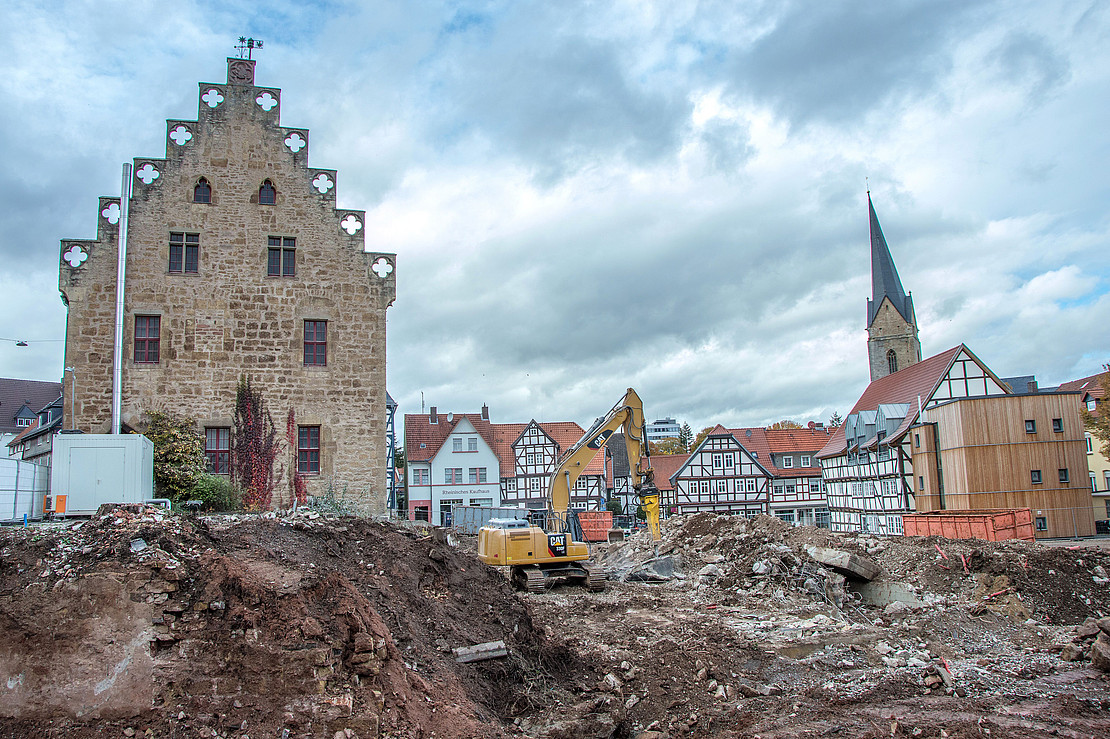This page contains automatically translated content.
No concrete is not a solution either
 Image: Lutz Benseler
Image: Lutz BenselerThe starting point for the "RückRat" research project was the planned demolition of part of the Korbach town hall. Instead of disposing of the demolition material in a landfill site as is usually the case, the city of Korbach decided to test the innovative approach of "urban mining". This involves examining all the materials contained in the building to be demolished to see if it is worth recycling. "In the future, the material content of buildings will help determine the value of real estate," Prof. Stefan Bringezu is certain. Prof. Bringezu is the Executive Director of CESR and head of the Sustainable Resource Management department.
In order to make an informed statement about whether the recycling of demolition material is worthwhile, it is necessary to develop a model of material, energy and water flows that takes into account the entire life cycle of the building. This makes it possible to determine the resource footprints, which can be used to evaluate for each material whether recycling is worthwhile or whether it is ultimately more sustainable to use new building material. "The calculation of resource footprints is based on life cycle assessment and is currently a very exciting topic in research," says Dr. Clemens Mostert, who is responsible for leading the project at CESR.
High-performance concrete helps save resources
Recycling concrete and other mineral building materials is also a central research topic at the Department of Civil and Environmental Engineering's "Materials of Construction and Construction Chemistry," as Dr. Alexander Wetzel reports. Together with Prof. Dr. Bernhard Middendorf, he coordinates several research projects there. "On the one hand, our goal is to produce building materials with targeted properties with low energy and raw material requirements, and on the other hand, we want to use construction residues for the production of high-quality building materials," says Dr. Wetzel. For years, the scientists have been working successfully on optimizing concretes and sand-lime bricks and developing environmentally friendly alternative binder systems.
"One of the most exciting topics in recent years has emerged as so-called ultra-high performance concrete, or UHPC for short," Dr. Wetzel describes. UHPC is a type of concrete characterized by particularly high density and strength. "With the help of this UHPC, very slender concrete structures are possible, so that less concrete can be used for construction as a result" says Dr. Wetzel. "The extremely high impermeability means that no corrosive solutions can penetrate the structure, resulting in significantly longer service lives - just think of bridge structures," adds Prof. Middendorf.
It won't work without concrete
"Our results show that UHPC does involve a higher consumption of resources than conventional concrete," says Dr. Wetzel. "At the same time, however, the improved properties mean that less concrete is needed overall." The researchers concluded that by using UHPC, more climate-friendly buildings can be constructed due to its long service life. Some of the work done by the teams and by the Department of Solid Construction (Prof. Fehling) is also present on the university campus at Holländischer Platz: for example, a demonstrator of precast concrete elements made of foamed concrete with a UHPC shell is located near the Gießhau and, on the other hand, several benches made of concrete with recycled aggregate from broken sand-lime bricks are currently being built on the campus.
"Concrete and other mineral building materials will not be able to be replaced, even in the long term," Prof. Middendorf is convinced. Nevertheless, he is cautiously optimistic: "Many comparatively small improvements will increase sustainability and thus also reduce climate-damaging emissions."
Text: Markus Zens